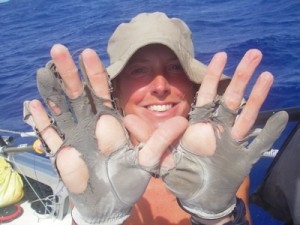
The Atlantic is 2935 miles across (although with all my meanderings I probably covered many more miles than that). That's the distance from New York to San Francisco. I've tried to find a comparable distance in Europe, but even London to Athens is only a measly 2112 miles. So try this one...
Look at your hand. If that hand is an average hand it will measure about 7.5 inches from wrist to fingertip. If that hand was my boat, the distance I rowed across the Atlantic would be the same as the distance from Oxford to Cambridge. Imagine 'walking' that distance (80 miles) by putting one hand wrist-to-fingertip in front of the other.
Kakadu Golf Gloves have just renewed their sponsorship with me. I wore out 5 pairs of their kangaroo skin gloves crossing 3000 miles of Atlantic, so will probably need 15 pairs to cover 9000 miles across the Pacific. That must be almost an entire kangaroo's-worth. And if you were 'hand-walking' from Oxford you'd probably be glad of them too.
|
|
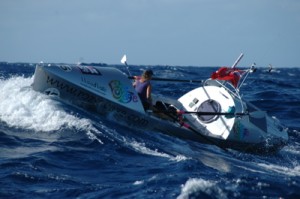
Four short videos of my Atlantic row are now available for viewing online. Even if you read the dispatches you might not fully appreciate what it was like out there. If a picture speaks a thousand words, a video speaks ten thousand.
Parts 2 and 4 are my favourites, but 3 isn't bad either. Nor is 1, come to that. Enjoy!
Part 1: preparations in the UK, boatbuilding, Henley, provisioning, setting out.
Part 2: storms, broken oars, broken comms equipment, but spirit intact - just about.
Part 3: 101 days gone, just 2 days to go. But the retrieval line to the sea anchor has snapped, so the sea anchor is hanging there like a ball and chain. Only one thing she can do... "
Part 4: after 103 days at sea, dry land at last! Arrival in Antigua - this is one very happy rower."
|
|
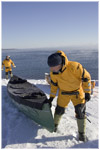
On July 1, 2006 Lonnie Dupre and Eric Larsen became the first people in the world to travel to the North Pole in summer. Traditionally, Arctic Ocean expeditions are launched during the coldest time of year while the ice is still thick and stable. In summer, freeze-thaw conditions, shifting ice floes, slush and melt water pools have deterred polar explorers from attempting a summer North Pole Expedition. Until now. How did they do it?
They pulled and paddled specially modified canoes across nearly 1,000 miles of shifting sea ice and open ocean. It took them 2 months.
As well as being in it for the adventure, they teamed up with Greenpeace to draw attention to the impact of global warming on the Arctic. See their fact-filled website for more info and some fantastic photos.
And how did I get to hear about them? We both use XJournal for our blogs, and we are both concerned about the environment. Eric called me up today to compare notes on extreme expeditions, and we hope to meet up sometime soon.
I'd like to pick his brains about the Arctic, as I have ambitions in that direction. But I'd better get there soon, because it's disappearing fast and I'd rather trek there than row there.
|
|
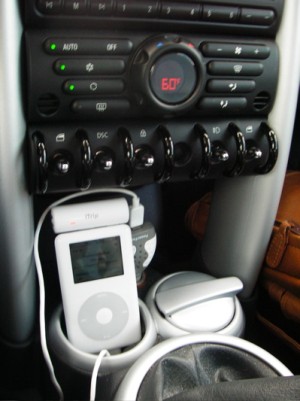
Trip 1: my iTrip, the snazziest little gizmo for playing music from your iPod in your car. It converts the music into an FM radio signal that the car's stereo system can pick up. It made all the difference to my drive up Highway 101. The only bit of bad news? It's illegal in the UK. Transmitting a radio signal, even if it's only the six inches from your iPod to your car stereo, turns you into a pirate radio station.
Trip 2: a hiking trip in the Wunderlich County Park just a few miles down the road from Robert's Nook. This is my new fitness regime - a brisk 5 mile walk/jog/run every day, climbing 1,650 feet and down again, through redwoods, eucalyptus, oaks and fir trees - shady and fragrant. Who could resist a path called Bear Gulch Trail? It makes exercise almost enjoyable.
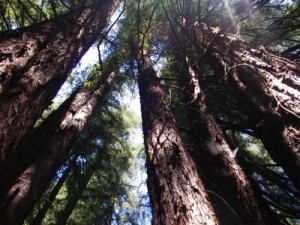
Redwoods along the Bear Gulch Trail
|
|